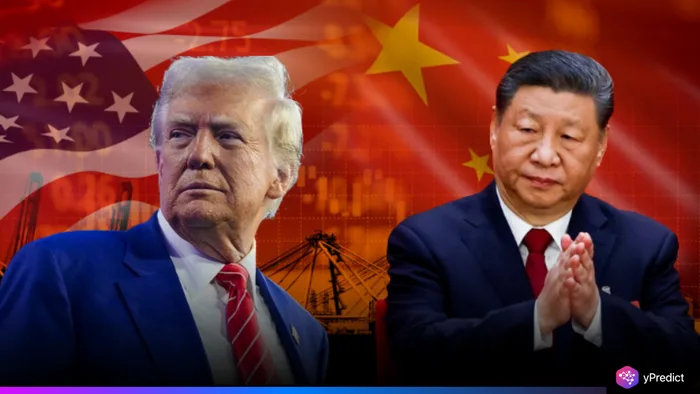
Former US President Donald Trump’s aggressive trade stance has taken a new turn. Instead of direct tariffs alone, Trump is targeting China through its global supply chain partners. The idea is clear: disrupt the flow of goods and services that support China’s massive export machine, especially those reaching the US. Bloomberg Economics suggests this strategy could significantly weaken China’s export growth.
This shift comes amid rising US-China trade tensions and an increasingly fragmented world economy. While tariffs previously hit specific Chinese goods, Trump’s new focus is broader. It looks beyond direct trade and into the web of international relationships that keep China’s exports competitive. The implications are serious, not just for China, but for every country linked to global supply chains.
Why the Supply Chain Focus Hurts China’s Exports More
China’s hold on global trade is not solely dependent on what it assembles domestically, but also on the raw materials, components, and services it sources from dozens of countries. The United States is seeking to manipulate those trade partners to place greater pressure on China, by restricting imports or imposing tariffs, everything to decrease China’s ability to provide better export finished products to world markets.
According to Bloomberg Economics, approximately two-thirds of China’s exports to the US are operating on intermediates that originated in third-party countries. In other words, if these partner nations faced pressure or severed ties with China for trade, China’s marginal export output would be directly impacted. By harassing China’s supporting structure compared to just its finished product, the US maintains a better advantage in its negotiations and trade war.
Partner Countries Caught in the Crossfire
Nations like Vietnam, Malaysia, and Taiwan have already become key players in China’s global supply chains. Many of them are now facing increasing scrutiny from Washington. These countries often serve as transit points for goods that begin in China and end up in American markets. By disrupting this flow, the US hopes to prevent China from using workaround strategies that bypass direct tariffs.
But this method carries global risks. Many of these countries are also key US trading partners. Disrupting them can lead to export disruption across multiple economies. For instance, a crackdown on Vietnamese firms working with Chinese manufacturers could delay electronics shipments not just to the US but worldwide.
Economic Growth at Risk
Bloomberg warns that the plan could undermine China’s growth path. If major trade partners stop trading with China due to US coercion, it could reduce foreign investment while limiting access to essential imports from China. The second or third-order effects, if there are any, could slow geopolitical environments of China technological and economics expansion.
The strategy also risks unintended consequences for American businesses. Many US companies rely on finished products or components that originate from China’s extended trade network. Disrupting this network raises input costs and production delays, hitting US firms with new challenges.
Will This Strategy Work in the Long Term?
While the short-term disruptions are real, experts are divided on the long-term gains for the US. China’s economic model has shown resilience in past crises. It may simply pivot further toward self-reliance or deepen ties with alternative partners like Russia or Latin American countries.
The short-term disruptions are real, but experts differ on the ultimate benefits for the US. China’s economic model has proven resilient in past crises and may simply pivot even more toward self-reliance or build deeper relationships with alternative partners such as Russia, or countries in Latin America.
At the same time, trade analysts are calling this trend an increase in US-China trade tensions, not a reduction. If countries in the middle are forced to choose sides then global cooperation may decrease.
The Global Supply Chain as a Strategic Weapon
This new playbook uses global supply chains not merely for their efficiency, but as leverage in political skirmishes. It acts as a warning shot for economies superpowers – interconnectedness can be vulnerability. For China, this exposes their reliance on the world for critical components and infrastructure. For the US, this is a risky bet that could hinder allies as much as adversaries.
Will this shift create some permanent damage to China’s export flow or only force a temporary re-routing? We don’t know. What we do know is that supply chains, which were effectively invisible, are now front and center in the global strategic landscape.







